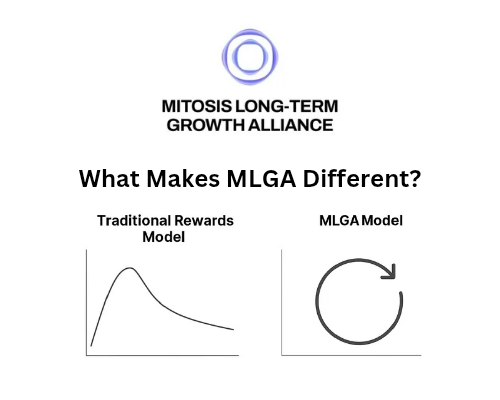Mobile-First Web3: Building dApps with Web3Auth and Particle Network SDKs

In 2025, the Web3 ecosystem is undergoing a transformative shift towards mobile-first experiences. As decentralized applications (dApps) strive to reach a broader audience, the demand for seamless, user-friendly mobile interfaces has never been higher. Two pioneering solutions, Web3Auth and Particle Network, are at the forefront of this evolution. Web3Auth simplifies user onboarding through social logins and secure key management, while Particle Network's Universal Accounts offer a unified, cross-chain user experience. Together, they are redefining how users interact with Web3 on mobile devices, making decentralized technologies more accessible and intuitive than ever before.
Why Mobile Matters in Web3
Smartphones now account for over 55% of global web traffic, and Web3 must adapt or lose mass adoption to mobile-first rivals. Traditional wallet setups and manual bridge flows break on small screens, leading to high drop-off rates. By embedding secure, social logins and single-account multi-chain balances directly into apps, developers can slash onboarding time from minutes to seconds, critical on mobile. See https://web3auth.io/docs/features/mobile?
Web3Auth SDK: Invisible, One-Click Wallets
Web3Auth’s Plug & Play Mobile SDKs let you add passwordless login in four lines of code, supporting iOS, Android, React Native, and Flutter.
- MPC Core Kit splits private-key shares between user devices and Web3Auth nodes, removing single-point failures while preserving non-custody.
- Social Logins (Google, Twitter, Discord) offer familiar entry points, boosting conversion rates by up to 40% in beta tests.
- Invisible UX avoids modals and redirects on mobile, keeping users in-app and reducing context switching. See https://github.com/Web3Auth/web3auth-react-native-sdk?
My Analysis: For Mitosis, integrating Web3Auth means vault deposit flows can begin with a single tap, generating user keys via MPC and immediately authorizing miAsset approvals—no seed phrases, no gas-token hassles.
Particle Network SDK: Universal Accounts & Gas Abstraction
Particle’s Universal Accounts let a single identity hold ETH, USDC, and any miAsset across EVM chains without switching wallets.
- Universal Gas lets users pay fees in stablecoins or vault tokens, eliminating the need to maintain separate gas balances.
- Universal Liquidity aggregates on-chain liquidity pools, auto-sourcing the best swap routes for deposits or withdrawals.
- Cross-Platform Support via React Native and Flutter SDKs ensures parity of experience on both major mobile OSes. See https://developers.particle.network/api-reference/auth/mobile-sdks/react?,
My Analysis: When Mitosis users interact with Matrix Vaults on mobile, Particle ensures that gas fees are auto-paid and miAsset deposits route through the most liquid chain, seamlessly, even on spotty cellular connections.
Integrating on Mitosis: A Step-by-Step Guide
- Set Up Web3Auth
- Follow the React Native Quick Start to install
@web3auth/react-native-sdkand@toruslabs/react-native-web-browserWeb3Auth.
- Follow the React Native Quick Start to install
- Configure Particle Universal Accounts
- Retrieve
projectId,clientKey, andappIdfrom your Particle dashboard and initialize@particle-network/rn-auth-coredevelopers.particle.network.
- Retrieve
- Leverage Mitosis EOL & Vault SDKs
- Use the Mitosis Integration Guide to connect your dApp to EOL Vaults and mint miAssets Mitosis Docs | Mitosis Docs.
- Enable Cross-Chain Messaging
- Incorporate Hyperlane’s JS SDK to relay proof confirmations from one chain to another, triggering vault rebalances in real time. See hyperlane.xyztheir
- Optimize UX
- Bundle deposit calls using Web3Auth’s batch transactions and Particle’s gas abstraction for a single-tap vault experience.
Challenges & Best Practices
- Offline Recovery: Ensure you integrate Web3Auth’s social-recovery flows so mobile users can regain access if they lose their devices. See GitHub
- Network Reliability: Fallback to HTTP RPC for proof submission when Hyperlane delays exceed mobile timeouts. See hyperlane.xyz,
- Security Audits: Regularly review MPC and SDK code; both Web3Auth and Particle are open-source, inviting third-party audits.
Future Outlook: Toward Truly Native Web3 Apps
With 5G rollouts and Lite-client proofs, next-gen mobile dApps will verify cross-chain state on-device. Combining SP1 zkVM proofs in Web3Auth flows and Particle’s Universal Accounts creates a trust-minimized, zero-trust mobile environment, where every transaction carries its proof and every wallet recovers via social fallback.
Conclusion
The integration of Web3Auth and Particle Network's Universal Accounts marks a significant milestone in the journey towards a mobile-centric Web3 landscape. By addressing the complexities of user authentication and cross-chain interactions, these solutions are lowering the barriers to entry for users and developers alike. As platforms like Mitosis adopt these technologies, we can anticipate a new era of decentralized applications that are not only more secure and efficient but also more aligned with the mobile-first preferences of today's users. The future of Web3 is mobile, and with tools like Web3Auth and Particle Network, that future is within reach.
🔗Links:

Comments ()